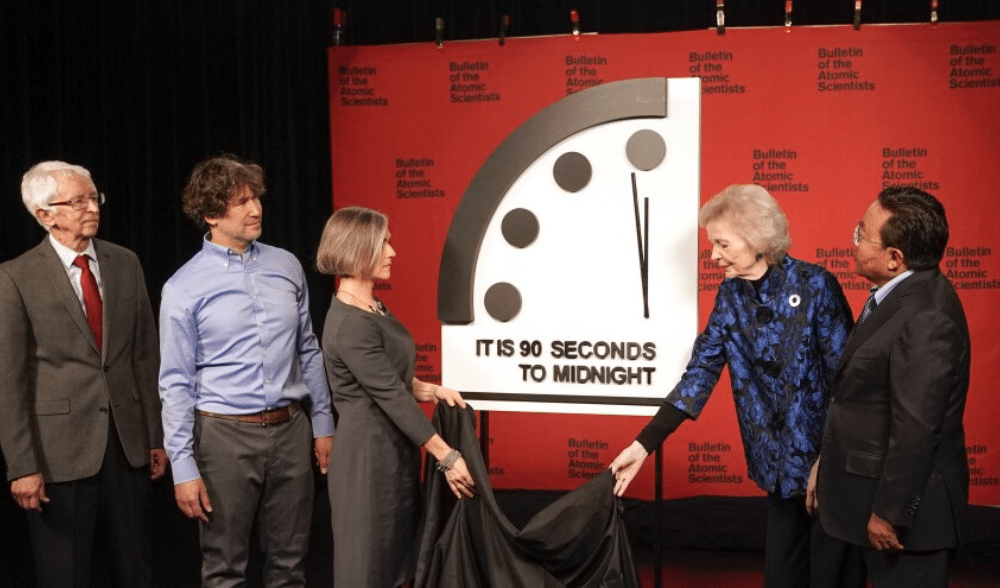RYAN BYRNE WRITES – For the first time since Russia’s invasion of Ukraine in February of 2021, the Bulletin of the Atomic Scientists has adjusted “The Doomsday Clock.” The clock, which is reassessed annually, is meant to symbolically show how close the world is to man-made destruction, with midnight representing a potential “doomsday.” This year, the clock was moved to 90 seconds from midnight—the closest it has ever been.
“The Doomsday Clock” was established in 1947 and has been changed on 25 occasions. It was re-set to 17 minutes until midnight— the furthest it has ever been— in 1991, as a result of “the end of the Cold War, [and] the United States and the Soviet Union [signing] the Strategic Arms Reduction Treaty.”
Now, the Bulletin of the Atomic Scientist explains that the clock was moved up “largely (though not exclusively) because of the mounting dangers of the war in Ukraine.” The Bulletin also adds that Russian threats to use nuclear weapons “constitute the worst nuclear development in 2022,” and warns that “Russia’s invasion of Ukraine has increased the risk of nuclear weapons use.” Sadly, while the non-profit Bulletin urges the United States to work with its Russian counterparts to reduce the risk of a nuclear exchange, it concedes that “there is no clear pathway for forging a just peace that discourages future aggression under the shadow of nuclear weapons.” Indeed, Russian officials and pundits have made a number of threats to use nuclear weapons. Deputy Chairman of the Security Council of Russia and former President Dmitry Medvedev said just this month that “the defeat of a nuclear power in a conventional war may trigger a nuclear war.”
The Bulletin cites other factors that informed their decision to move up “The Doomsday Clock.” One was climate change. Although renewable energy output is growing at a steady pace, says the organization, a decreased reliance on Russian natural gas and oil has led to new “investment in natural gas production and export infrastructure.” The Bulletin cites the historic floods in Pakistan and the summer heatwave in Europe as examples of climate driven disasters that could push the world towards a “doomsday” scenario. The organization also suggests that Russia’s threat to use biological weapons in its war against Ukraine could lead to a global catastrophe. Finally, the Bulletin points to Russia’s control of media within its borders and Russia’s “worrisome space activity in 2022” as “disruptive technologies” that could bring about international calamity.
Russia’s response to “The Doomsday Clock” update? Reuters reports that a spokesman for the government said that “the situation as a whole is really alarming,” but added that “there was no prospect of any detente, based on ‘the line that was chosen by NATO under U.S. leadership.’”
Indeed, Russia’s brutal invasion of Ukraine could have an impact far beyond the borders of both nations. While the Bulletin’s rationale for re-setting the clock was not solely focused on Russia’s war in Ukraine, given that this is the first clock change since 2020, an international sense of foreboding may well be warranted

